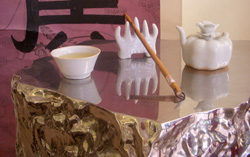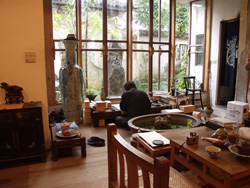This site is organized according to literati understanding of artworks’ relation to the human condition, progressing from personal circumstances to the social and historical. As artworks are successively experienced over long periods of time - and in particular settings by individuals - we cautiously presume that each subsequent appreciation of an artwork is in some ways unique. We approach this with two perspectives:
1. an ethnographical understanding that highlights the local and momentary perception or use of artworks – both at the time of making and at later times, and
2. a consideration of how the arrangements for experiencing artworks can generally and repeatedly be aligned with particular ethical or moral concerns.
Most of the materials here are from the Ming (1368-1644) and early Qing periods (1644-1911). This was an epoch of significant maturity, and artworks from this time remain plentiful. There is also an emphasis on the Jiangnan (江南) region - the hinterland of modern Shanghai - where literati dominated and guided local culture, significantly influencing vernacular design.
Some of the objects are from public museums, others from private collections. The inclusion of privately held works is intentional - to indicate that these materials are with us, and continue to be part of personal lives. While most of the paintings and calligraphy are 'historical', some artifacts in ephemeral media are recent products of Jiangnan local traditions.
The section on resources gives an overview of important publications and public collections, and comment on recent events of interest. Finally, the section on collecting and markets offers practical strategies for collecting with a view to addressing risks and understanding the contemporary auction market, especially within China. | |  |

